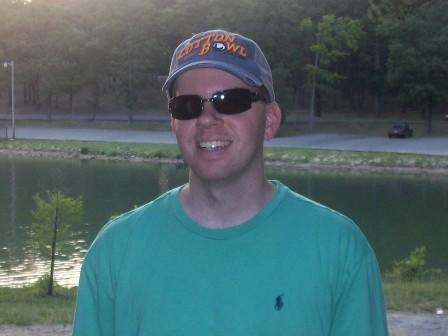Andy Sullivan: Against the Grain
John Lee Hooker recorded “Boom Boom” in 1964. The song was covered by The Animals just four years later. Fans of NCIS New Orleans instantly recognize the song as being in the show open. You’ll notice the song sounds a little different. That’s because the JLH original is mixed with Rock band Big Head Todd & The Monsters. The version appears on Big Head Todd The Monsters Essentials from Apple Music.
True Colors is from the second album of Cyndi Lauper in 1986. The song spent two weeks at #1. It received a Grammy for Best Female Pop Vocal Performance. Phil Collins covered the song for his 1998 …..Hits album. His version reached #2 on the U.S. charts.
John Lee Hooker makes another appearance. This time, it’s one you probably wouldn’t imagine. I didn’t. I always figured “One Bourbon, One Scotch, One Beer” was a George Thorogood original. George recorded the song for his 1989 album, George Thorogood & The Destroyers. However, were you aware the song was originally done by blues legend John Lee Hooker? I didn’t know either. He recorded it for his 1966 album Millennium Edition. I learned that from VH1’s Top Ten Cover Songs. I looked it up to make sure it was true. Indeed it was true.
“I Want Candy” is a bubblegum pop tune I first heard in the ‘80’s by one-hit-wonder group Bow Wow Wow. I instantly figured it was an ‘80’s song. It wasn’t until come 30 years later that I’m in the car listening to Michael De Barres’ show on LSUG, Sirius XM and hear him say “here’s “I Want Candy” by The Strangeloves”. I couldn’t believe it. Not that it was any sort of masterpiece. The original was in 1965. Bow Wow Wow’s was in 1982. The original went to #11 in the U.S. The cover went to #62 on Billboard Hot 100.
I’ll end this week on a couple of personal favorites. Marvin Gaye had a hit with “Mercy Mercy Me” in 1971 on the album What’s Going On. Marvin Gaye took heat from Berry Gordy and Motown about the album's context and fought the Detroit recording impresario to release the record. "From Jump Street, Motown fought What’s Going On," recalled Gaye. "They didn’t like it, didn’t’ understand it, and didn’t trust it. Management said the songs were too long, too formless, and would get lost on a public looking for easy three-minute stories. For months they wouldn’t release it. My attitude had to be firm: ‘Put it out or I’ll never record for you again!’”
The album What's Going On began life at Motown's Hitsville U.S.A. studios, where recording of the monumental title track started in June 1970. However, when Gaye brought the recording to share with Barry Gordy Jr. in Los Angeles (where the Motown boss had relocated), it was not met with praise. In fact, Gordy hated it.
Gaye went on hiatus in response, but execs at Motown were able to get the single released, and it quickly became among Motown's fastest-selling single releases, hitting Number Two on the Billboard Hot 100. Shortly after – with Gordy's blessing – Gaye returned to Hitsville to record the album he wanted to make, which he did from March 1 to March 10. The album's original mix was recorded in Detroit at Hitsville, Golden World and United Sound Studios, while a new mix of the album was engineered at The Sound Factory in West Hollywood.
The album What's Going On began life at Motown's Hitsville U.S.A. studios, where recording of the monumental title track started in June 1970. However, when Gaye brought the recording to share with Barry Gordy Jr. in Los Angeles (where the Motown boss had relocated), it was not met with praise. In fact, Gordy hated it.
Gaye went on hiatus in response, but execs at Motown were able to get the single released, and it quickly became among Motown's fastest-selling single releases, hitting Number Two on the Billboard Hot 100. Shortly after – with Gordy's blessing – Gaye returned to Hitsville to record the album he wanted to make, which he did from March 1 to March 10. The album's original mix was recorded in Detroit at Hitsville, Golden World and United Sound Studios, while a new mix of the album was engineered at The Sound Factory in West Hollywood. (www.RockHall.com)
Robert Palmer covered the classic for his 1990 album Can’t Explain. Gaye’s version rose to #4. Palmer’s cover rose to #9.
- Log in to post comments



























